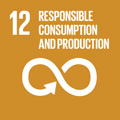- Docente: Nadia Burani
- Credits: 10
- SSD: SECS-P/01
- Language: Italian
- Teaching Mode: Traditional lectures
- Campus: Bologna
- Corso: Second cycle degree programme (LM) in Economics and Economic Policy (cod. 8420)
Learning outcomes
The aim of this course is to provide a thorough knowledge of theoretical models and analythical methods of modern microeconomics.
Course contents
ORGANIZATION OF LECTURES:
The course is organized with all lectures taught in presence. Exams are in presence too.
COURSE CONTENT:
PART I: Consumer theory
1. Utility maximization
2. Expenditure minimization
3. Duality and comparative statics
4. Decisions under uncertainty: Expected utility theory
PART II: Theory of the firm
5. Technology and production function
6. Profit maximization
7. Cost minimization
8. Cost functions, geometry of costs, duality
PART III: General Equilibrium
9. Pure exchange economies
10. Economies with consumption and production
Readings/Bibliography
The main textbook is Jehle G.A. e P. Reny: "Advanced Microeconomic Theory, Prentice Hall, 2010.
Further readings:
- D.M. Kreps: "A Course in Microeconomic Theory", Prentice Hall, 1990
- A. Mas-Colell, M.D. Whinston, J.R. Green:"Microeconomic Theory", Oxford University Press, 1995 (more advanced)
- H. R. Varian: "Microeconomic Analysis", third Edition 1992, W.W. Northon & Co. Inc.
Slides, digital boards etc. can be found on Virtuale
Teaching methods
Lectures and tutorials.
As for mathematical prerequisites, a good knowlwdge of the
following topics is needed:
- linear algebra
- functions of many variables
- differential calculus
- optimization subject to constraints
Assessment methods
The final assessment consists in awrittenexamination
with analytical exercises and theoretical questions. Analytical
exercises are worth 2/3 of the final grade while theoretical
questions are worth 1/3.
Students who attend all lectures have the possibility to undertake a mid-term examination on the first part of the programme and a final examination on the rest of thesyllabus.
No oral examinations are admitted.
Teaching tools
Theory will be complemented by tutorials to be added to the
ordinary time schedule.
Office hours
See the website of Nadia Burani
SDGs



This teaching activity contributes to the achievement of the Sustainable Development Goals of the UN 2030 Agenda.
